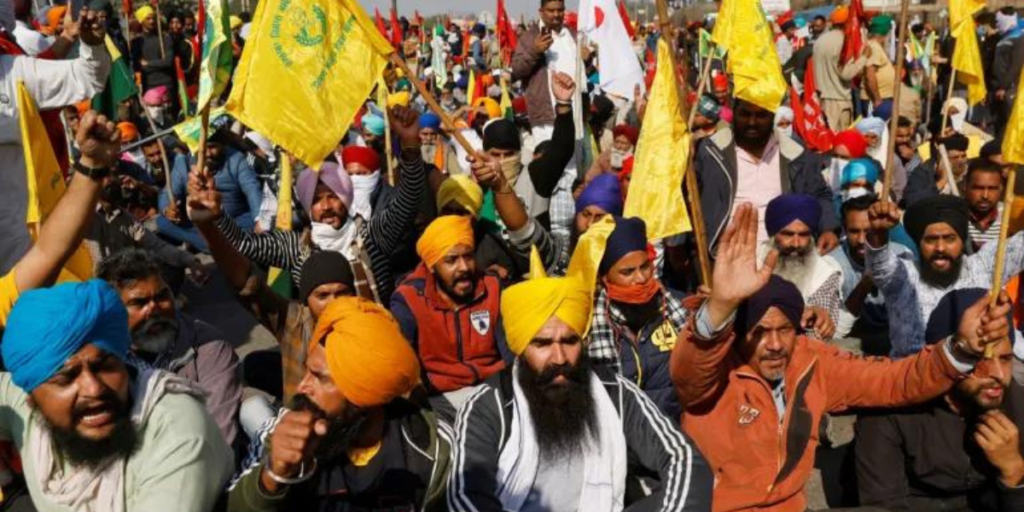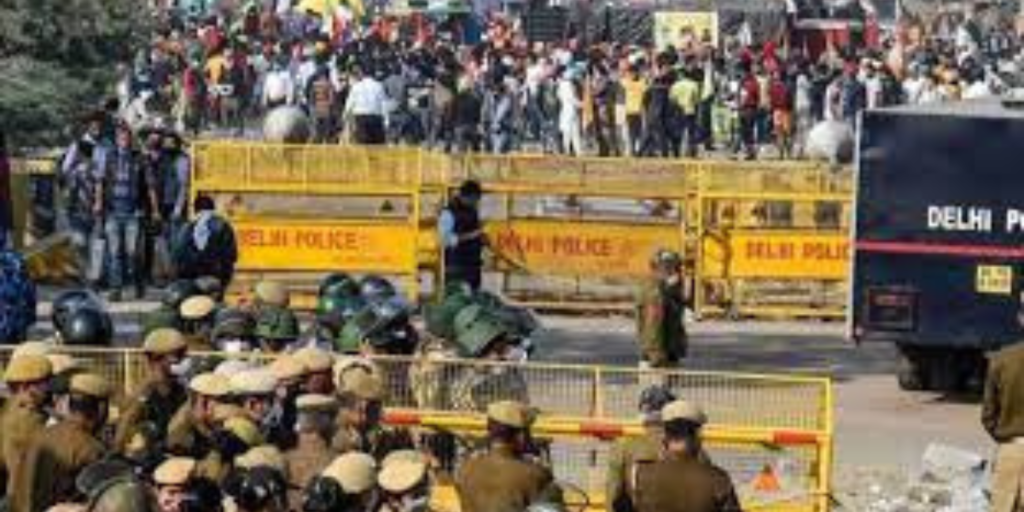The Farmers Protests 2.0, which commenced as farmers from Punjab, Haryana, and Western Uttar Pradesh march towards Delhi, showcases a departure from the previous protests in terms of both demands and leadership. Here’s a breakdown:
Table of Contents
What Do They Want?
Unlike the previous protests that mainly focused on the repeal of the three contentious farm laws, the demands of the Farmers Protest 2.0 are more diverse and aimed at ensuring the financial viability of farming. Some of the key demands include:
- Guaranteed Minimum Support Price (MSP): The farmers are seeking a legal guarantee for MSP for their produce, ensuring that they get a fair price for their crops.
- Withdrawal of Electricity Amendment Bill: The farmers oppose the Electricity Amendment Bill, which they fear would increase electricity tariffs for agricultural use.
- Repeal of Environment Laws: Farmers are advocating for the repeal of certain environmental laws that they perceive as detrimental to their interests.
- Reversal of Essential Commodities Act Amendments: They want the government to revert the amendments made to the Essential Commodities Act, which they believe could lead to exploitation by corporations.

What Is Their Strategy?
The strategy of the Farmers Protests 2.0 involves marching towards Delhi to draw attention to their demands and exert pressure on the Central government. Some key aspects of their strategy include:
- Organized Mobilization: The farmers are mobilizing in significant numbers from multiple states, demonstrating unity and resolve in their demands.
- Breakaway Faction of SKM: The protests are led by a breakaway faction of the Sanyukt Kisa Morcha (SKM), indicating a divergence from the leadership of previous protests. This suggests internal dynamics within the farmer groups.
- Continued Agitation: Despite the repeal of the three farm laws, the farmers have continued their agitation, indicating that their concerns extend beyond the now-repealed laws.
- Focused Messaging: The protesters are conveying a clear message regarding their demands, which are broader and not limited to the farm laws.
The Spark and Escalation:
The confluence of longstanding grievances, exacerbated by the introduction of the farm laws, culminated in a groundswell of dissent that reverberated across the nation. The protests initially centered on the demand for the repeal of these laws, as articulated by prominent farmer unions such as the Sanyukt Kisan Morcha (SKM). The agitation gained momentum through a potent blend of grassroots mobilization, social media activism, and steadfast resolve, as farmers converged upon the borders of Delhi in a formidable display of collective resistance. The blockade of key arterial routes and the encampment at protest sites such as Singhu, Tikri, and Ghazipur underscored the endurance and resolve of the agrarian populace.

The Repeal and Beyond:
The watershed moment arrived on November 19, 2021, when the Indian government acceded to the longstanding demand of farmers protests 2.0 and announced the repeal of the contentious farm laws. While heralded as a triumph of people power and grassroots mobilization, the repeal marked the inception of a new phase in the farmers’ struggle—a phase characterized by recalibrated demands and an unwavering commitment to systemic reform. Far from subsiding, the protests metamorphosed into a broader crusade for agrarian justice, encapsulating a spectrum of issues ranging from MSP guarantees to environmental safeguards.
The Dawn of Farmers Protests 2.0:
Against this backdrop of heightened consciousness and mobilization, the Farmers’ Protest 2.0 emerged as a continuation and culmination of the agrarian upheaval. Spearheaded by a breakaway faction of the Sanyukt Kisan Morcha (SKM), the protests charted a divergent course, marked by a more expansive agenda and a recalibrated strategy. Unlike its predecessor, which predominantly focused on the repeal of specific laws, the Farmers’ Protest 2.0 transcended narrow confines and articulated a broader vision of agrarian rejuvenation and socio-economic justice.
The Demands and Deliberations:

At the heart of the Farmers Protests 2.0 lie a constellation of demands that resonate with the core concerns of the farming community. Foremost among these is the call for a legal guarantee of Minimum Support Price (MSP), a longstanding demand that underscores the imperative of remunerative pricing and income security for farmers. The withdrawal of the Electricity Amendment Bill, perceived as a harbinger of increased electricity tariffs, further underscores the farmers’ anxieties regarding input costs and agricultural sustainability.
Moreover, the repeal of certain environmental laws, including the contentious Farm Laws, signals a broader critique of policy frameworks that prioritize commercial imperatives over ecological stewardship. The reversal of amendments to the Essential Commodities Act, which sought to dilute regulatory safeguards against hoarding and price manipulation, underscores the imperative of preserving food security and market integrity in the agrarian economy.
Strategy and Mobilization of Farmers Protests 2.0 :
Central to the efficacy of the Farmers Protests 2.0 is the strategic calculus and mobilizational dynamics that animate the movement. In contrast to the spontaneous outpouring of anger witnessed during the initial phase, the current protests are marked by a more structured and deliberative approach. The breakaway faction of the Sanyukt Kisan Morcha (SKM) reflects the evolving dynamics of leadership and representation within the farmers’ movement, signaling a broader realignment of political forces and ideological currents.
Furthermore, the sustained mobilization and outreach efforts, including mass rallies, tractor marches, and social media campaigns, underscore the movement’s capacity to galvanize public opinion and shape the contours of political discourse. The convergence of diverse stakeholders, including farmers, agricultural workers, civil society organizations, and opposition parties, reflects the inclusive and pluralistic character of the protests, transcending narrow sectarian divides and affiliations.
As the Farmers Protests 2.0 unfolds against the backdrop of heightened political polarization and economic uncertainty, its trajectory remains fraught with both promise and peril. While the repeal of the farm laws represents a significant victory for the farming community, the broader quest for agrarian justice and structural reforms demands sustained vigilance and collective action.

In the crucible of agrarian dissent, the farmers protests 2.0 movement emerges not merely as a harbinger of change but as a testament to the resilience and fortitude of those who toil the land. As the echoes of protest reverberate across the agrarian heartlands, the struggle for a more just and equitable future continues unabated, fueled by the indomitable spirit of resistance and renewal.
Conclusion:
The saga of Farmers Protests 2.0 encapsulates a transformative moment in India’s agrarian history, replete with the promise of renewal and the imperatives of justice. From its origins in the fertile plains of Punjab to the corridors of power in Delhi, the movement embodies the aspirations and struggles of millions who till the soil and nurture the land. As the arc of protest unfolds, the farmers’ quest for dignity, justice, and equity resonates as a clarion call for a more inclusive and sustainable future—a future shaped not by the imperatives of profit, but by the ethos of compassion, solidarity, and shared prosperity.

